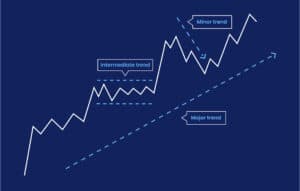Forex trading is a dynamic and complex market where currencies are traded globally. Traders analyze various factors to make informed decisions, and one critical aspect is choosing the timeframe for trading analysis. The timeframe selected can significantly impact trading strategies, risk management, and overall success. In this comprehensive guide, we will explore the essential factors to consider when selecting the timeframe for forex trading analysis.
Market Liquidity
Market liquidity refers to the ease with which an asset can be bought or sold without significantly impacting its price. Liquidity varies across different timeframes in the forex market. Shorter timeframes, such as the one-minute or five-minute charts, often exhibit higher volatility but lower liquidity. On the other hand, longer timeframes, such as daily or weekly charts, tend to have more stable liquidity.
When choosing a timeframe for forex trading analysis, traders should consider their liquidity preferences. Those seeking quick, short-term gains may opt for shorter timeframes, while investors with a long-term perspective may prefer longer timeframes. It’s crucial to understand that liquidity influences transaction costs, slippage, and the effectiveness of trading strategies.
Trading Style and Objectives
Traders employ various trading styles, including day trading, swing trading, and position trading, each requiring a different timeframe for analysis. Day traders focus on short-term price movements and typically utilize intraday charts, such as one-minute (M1) or fifteen-minute (M15) timeframes. Swing traders aim to capture medium-term trends and may analyze hourly (H1) or four-hour (H4) charts. Position traders take a long-term view of the market and often rely on daily or weekly charts for analysis.
Before selecting a timeframe, traders should align it with their trading style and objectives. Attempting to implement a day trading strategy using a weekly chart or vice versa can lead to suboptimal results. It’s essential to match the timeframe with the desired holding period and level of involvement in the market.
Volatility and Price Action
Volatility refers to the degree of variation in the price of a financial instrument over time. Different timeframes exhibit varying levels of volatility, with shorter timeframes typically experiencing higher volatility due to rapid price fluctuations. Conversely, longer timeframes tend to have lower volatility as they smooth out short-term price movements.
Traders should consider the level of volatility they are comfortable with when selecting a timeframe for analysis. High-volatility environments can offer lucrative trading opportunities but also pose increased risks. Analyzing price action within the chosen timeframe allows traders to identify patterns, trends, and support/resistance levels essential for making informed trading decisions.
Time Commitment and Lifestyle
The timeframe chosen for forex trading analysis should align with the trader’s time commitment and lifestyle. Active traders who can dedicate several hours a day to monitoring the market may prefer shorter timeframes, allowing them to capitalize on intraday price movements. Conversely, traders with limited time availability may opt for longer timeframes, requiring less frequent monitoring and decision-making.
It’s crucial to strike a balance between trading frequency and lifestyle considerations. Overcommitting to short-term trading may lead to burnout and emotional exhaustion, while neglecting longer-term analysis may result in missed opportunities or inadequate risk management. Traders should assess their time availability realistically and choose a timeframe that suits their lifestyle and preferences.
Risk Management and Position Sizing
Effective risk management is essential for long-term success in forex trading. The chosen timeframe for analysis directly influences risk management strategies and position sizing. Shorter timeframes often require tighter stop-loss levels and smaller position sizes to account for rapid price movements and increased volatility. Conversely, longer timeframes may allow for wider stop-loss levels and larger position sizes due to smoother price action.
Traders should consider their risk tolerance and capital allocation when selecting a timeframe for analysis. A thorough understanding of risk management principles, including stop-loss placement, leverage utilization, and position sizing, is crucial regardless of the chosen timeframe. By aligning risk management strategies with the selected timeframe, traders can mitigate losses and preserve capital in the volatile forex market.
Choosing the appropriate timeframe for forex trading analysis is a crucial decision that can significantly impact trading outcomes. Traders should consider factors such as market liquidity, trading style, volatility, time commitment, and risk management when making this decision. By selecting a timeframe that aligns with their preferences, objectives, and lifestyle, traders can enhance their trading efficiency, mitigate risks, and increase the likelihood of success in the dynamic forex market.
How to Choose the Best Timeframe in Trading
Choosing the best timeframe in trading involves a systematic approach that considers various factors to optimize trading performance. Here are some steps to help traders select the most suitable timeframe:
a. Define Trading Goals and Strategy: Before choosing a timeframe, traders should clearly define their trading goals and strategy. Are they aiming for quick, short-term gains, or are they pursuing long-term investment opportunities? Different goals require different timeframes, so it’s essential to align the chosen timeframe with the overall trading strategy.
b. Evaluate Personal Preferences and Lifestyle: Traders should assess their personal preferences and lifestyle when selecting a timeframe. Factors such as time availability, risk tolerance, and psychological resilience play a significant role in determining the optimal timeframe. Traders should choose a timeframe that suits their lifestyle and allows them to trade comfortably without undue stress or pressure.
c. Conduct Market Analysis: Analyzing the forex market’s characteristics, including liquidity, volatility, and trading sessions, can help traders identify the most suitable timeframe. Traders should consider how these factors vary across different timeframes and how they align with their trading objectives and preferences. Additionally, understanding the behavior of major currency pairs during different times of the day can inform the choice of timeframe.
d. Experiment with Different Timeframes: It’s essential for traders to experiment with different timeframes to find the one that best suits their trading style and objectives. They can start by analyzing charts across various timeframes, from one-minute to weekly charts, and observe how price action and indicators behave differently. By gaining firsthand experience with different timeframes, traders can develop a better understanding of their strengths and weaknesses.
e. Consider Multiple Timeframe Analysis: Some traders employ a multiple timeframe analysis approach, where they analyze charts across different timeframes simultaneously. This approach allows traders to gain a more comprehensive view of the market by combining short-term and long-term perspectives. For example, a trader may use a higher timeframe, such as the daily chart, to identify the overall trend and a lower timeframe, such as the one-hour chart, to time their entries and exits more precisely.
f. Monitor Performance and Adapt: Once traders have chosen a timeframe, they should regularly monitor their trading performance and adapt as necessary. They should assess whether the chosen timeframe is yielding the desired results and adjust their strategy accordingly. If the chosen timeframe is not working as expected, traders should be open to experimenting with different timeframes or making other adjustments to improve their trading performance.
By following these steps and considering various factors such as trading goals, personal preferences, market analysis, and performance monitoring, traders can effectively choose the best timeframe for their trading activities. Adapting to changing market conditions and continuously refining one’s approach is key to long-term success in forex trading.
Let’s Manage Your Forex Funds With Fx Pips Guru!
Fx Pips Guru is a forex fund management company managing client’s funds based on monthly profit share. Let’s do Live Chat with our experts.




